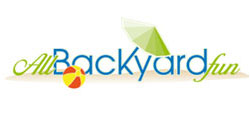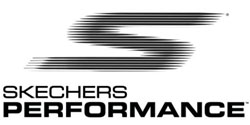News
News from Boulder, Colorado and Boulder Channel 1 News editors To advertise please call 303-447-8531
City of Boulder Christmas holiday schedule Dec.23-Jan. 1 cut & paste
Dec 22nd
- Most city administrative offices will close at noon.
- Parks and Recreation administrative offices will close at noon.
- Open Space and Mountain Parks, Cherryvale Road building, will close at noon.
- Park Central building administrative offices, including Planning & Development Services Center
- City parking lots, structures and meters will be free after noon.
Closures on Friday, Dec. 24
- All city administrative offices
- All recreation centers will close at 1:30 p.m.
- Main library and branches
- Senior centers
- Boulder Reservoir
- Pottery Lab
- Park Central building administrative offices, including Planning & Development Services Center
- Open Space and Mountain Parks, Cherryvale Road building
- Police Records and Property and Evidence will close at 4 p.m.
- City parking lots, structures and meters are free.
Closures on Saturday, Dec. 25
- All city administrative offices
- Main library and branches
- Boulder Reservoir
- Pottery Lab
- Senior Centers
- All recreation centers
- Flatirons Golf Course will close at 2 p.m.
- Police Records and Property and Evidence
- City parking lots, structures and meters are free.
Closures on Thursday, Dec. 30
- Most city administrative offices will close at noon.
- Parks and Recreation administrative offices will close at noon.
- Open Space and Mountain Parks, Cherryvale Road building, will close at noon.
- Park Central building administrative offices, including Planning & Development Services Center
- City parking lots, structures and meters will be free after noon.
Closures on Friday, Dec. 31
- All city administrative offices
- All recreation centers will close at 4 p.m.
- Main Library and branches
- Senior centers
- Boulder Reservoir
- Pottery Lab
- Park Central building administrative offices, including Planning & Development Services Center
- Open Space and Mountain Parks, Cherryvale Road building
- Police Records and Property and Evidence will close at 4 p.m.
- City parking lots, structures and meters are free.
Closures on Saturday, Jan. 1
- All city administrative offices
- Main library and branches
- All recreation centers
- Pottery Lab
- Boulder Reservoir
- Senior centers
- Police Records and Property and Evidence
- City parking lots, structures and meters are free.
Boulder chosen as “Beta Community” for groundbreaking sustainability measurement tool
Dec 22nd
The City of Boulder is one of just nine cities and counties in the country to be selected to pilot a new sustainability rating system that allows local governments to analyze, map, and manage all their sustainability data in one place, and to share that information on a dashboard that interfaces with the city’s website. Boulder’s designation as a “Beta Community” for the STAR Community Index ™ (STAR) was announced today by ICLEI – Local Governments for Sustainability USA.
The STAR tool is expected to transform and accelerate the local sustainability movement by offering cities and counties a roadmap for advancing climate protection, economic recovery and equal opportunities for all residents within a community.
“Boulder has shown its commitment to being an innovator in sustainability, but we know that having courage and good ideas isn’t enough to achieve our goals,” said David Driskell, executive director of community sustainability. “This tool will help advance our ongoing efforts to collect meaningful data to analyze what works, where there are opportunities for improvement and where we might focus our efforts. We are very excited to have been selected for this unique program, and think it will provide a great learning tool for our community.”
Together, ICLEI and the Beta Communities will road test STAR, to ensure that it can be adopted by local governments around the country, ranging from small towns to major cities. The other cities chosen are Atlanta, GA.; Chattanooga, TN.; Cranberry Township, PA.; Des Moines, Iowa; the District of Columbia; King County, WA.; New York, NY; and St. Louis, MO.
“These nine early-adopter cities, along with many other communities across the nation, are already taking the lead on energy efficiency and sustainable development in their own right and as such, they are the perfect candidates to advance the goals and mission of STAR, which is to build healthier, inclusive and more livable communities,” said Martin Chávez, Executive Director, ICLEI USA and three-term mayor of Albuquerque, NM.
The STAR Community Index is being developed by ICLEI-Local Governments for Sustainability USA (ICLEI USA) in partnership with the U.S. Green Building Council (USGBC), National League of Cities (NLC), and Center for American Progress (CAP), and in collaboration with over 150 sustainability experts and organizations from a diverse group of cities and counties, federal agencies, national associations, non-profit organizations and private entities.
The Beta Communities will receive technical support and resources to position them to become early adopters of STAR and accelerate their various sustainability efforts.
The selection of the nine Beta Communities follows the recent release of the STAR Sustainability Goals and Guiding Principles to assist local governments and communities with a much-needed vocabulary to more effectively strategize and focus their sustainability planning efforts. The 81 goals and 10 guiding principles released collectively define community-scale sustainability and serve as the foundation of STAR.
How the STAR Online Platform Will Work
The STAR online platform will provide users with a variety of features to enable quick uptake of the STAR Community Index. The platform will include features to enable local governments to analyze, map, and manage all their sustainability data in one place, and to present that information to internal managers, executives, and the public using a sustainability dashboard that interfaces with a city’s or county’s website. The tool will also facilitate data sharing with ICLEI for the verification and certification of a community under the forthcoming STAR rating system. More information on the STAR Beta Communities and STAR online platform can be found at: http://www.icleiusa.org/star
About the STAR Community Index
STAR will change the way local governments and communities approach sustainability goals – and how they manage and measure their long-term progress. This performance-based sustainability management system breaks ground by uniquely combining the following elements: a framework for sustainability — based on the pillars of environment, economy, and social equity; an online data-management platform that gathers, organizes, analyzes, and presents information required to meet community and government sustainability goals through effective management; and a management model and rating system that drive continuous improvement in community health, vitality and prosperity for all residents. More information on STAR can be found at: http://www.icleiusa.org/star
Live Shot of Lunar Eclipse CU to host Lunacy Party: Boulder Lunar eclipse tonight
Dec 21st
 (Courtesy Stuart Robbins) |
The University of Colorado at Boulder’s Fiske Planetarium, in partnership with the Sommers-Bausch Observatory, will host a viewing party of the total lunar eclipse on Monday, Dec. 20, starting at 10 p.m.
Fiske Planetarium will offer a free talk about the moon by education programs manager Matt Benjamin beginning at 10:30 p.m. in the planetarium’s theater. Refreshments and snacks will be provided.
Following the talk, attendees are invited to walk up the hill to nearby Sommers-Bausch Observatory to view the eclipse in its entirety, weather permitting. Telescopes will be available for public observation and attendees are encouraged to dress appropriately for outdoor star viewing.
The University of Colorado at Boulder’s Fiske Planetarium, in partnership with the Sommers-Bausch Observatory, will host a viewing party of the total lunar eclipse on Monday, Dec. 20, starting at 10 p.m.
Fiske Planetarium will offer a free talk about the moon by education programs manager Matt Benjamin beginning at 10:30 p.m. in the planetarium’s theater. Refreshments and snacks will be provided.
Following the talk, attendees are invited to walk up the hill to nearby Sommers-Bausch Observatory to view the eclipse in its entirety, weather permitting. Telescopes will be available for public observation and attendees are encouraged to dress appropriately for outdoor star viewing.
The eclipse viewing begins about 11:30 p.m. and will continue through 2 a.m. on Dec. 21. Staff from the planetarium, the observatory and related academic programs will be on hand to discuss the eclipse and answer questions. Cameras and lawn chairs are welcome.
This year’s event is a rare moment of celestial timing and alignment; in North America, the next lunar eclipse coinciding with the winter solstice will not occur until 2094.
For more information call Fiske Planetarium at 303-492-5002.
Contact
Matthew Benjamin, 303-492-4073
matthew.benjamin@colorado.edu
Erin Frazier, University Communications, 303-492-8384
erin.frazier@colorado.edu
source popsci
For the first time since 1638, a total lunar eclipse will be visible from North America on the longest night of the year. That night just happens to be tonight, starting at 11:32 AM, so all you moon-oglers will have to stay up awfully late (or wake up perversely early) to catch it.
.jpg)
The eclipse, in which the Earth’s shadow completely blocks out the moon, will last for a particularly long time tonight–it will start at 11:32 PM (Boulder Time), with the total eclipse beginning at 12:41 AM. (West coasters can do the time zone math themselves, and watch the eclipse in shorts with their movie star neighbors on the beach, or whatever they do out there.)
The total eclipse will last for a whopping 72 minutes, until 1:53 AM, during which the moon will appear to change colors, most noticeably to bright orange-red. But do not be alarmed! The moon is not on fire, functioning as some kind of pagan punishment to celebrate the winter solstice. It’ll be changing colors due to the light filtering through Earth’s atmosphere and reflecting on the moon’s dull surface.
For their part, NASA will be hosting a live chat with Marshall Center astronomer Rob Suggs and researcher Mitzi Adams, and will also host a live feed, in case you live in a dungeon or something and can’t see the moon (in which case, you should really look into moving once your dungeon’s lease is up).
source sure start.
Viewers in Boulder will see the eclipse begin around 12:32 am EST. Totality will occur from 12:41 am to 1:53 am EST. During this phase the moon will show as a rusty orange-red color.
This event will mark the start of winter solstice 2010. The shortest day of the year has fallen previously on December 21 but never with the lunar eclipse. It has been centuries since the two events coincided.
The next time this will occur will be in 84 years. While not as long as this last wait, it will still be far beyond the lifetime of most who will witness it tonight.
##########
Christmas telescopes might end up being unwrapped a bit early, though, in anticipation of a more detailed view of the lunar surface. Light rays bending around and through the edges of the earth’s atmosphere are expected to bathe the moon in sunset like colors, ranging from yellows to oranges and even dark brick reds.
On the west coast of the US, the total eclipse will begin on December 20, at 11:41 pm (PT).
This lunar eclipse coincides with the winter solstice, which means the moon will appear high overhead, making it easy to watch if the weather is good. Astronomers say that, due to recent volcanic eruptions that have dumped tons of ash and dust into the atmosphere, this may be a much darker lunar eclipse than usual.
The total eclipse will be visible in Greenland, Iceland, North America, Central America and western portions of South America. Western Europe will see the early stages of the eclipse before the moon sets, and parts of Asia will get to see a partial eclipse when the moon rises.





















